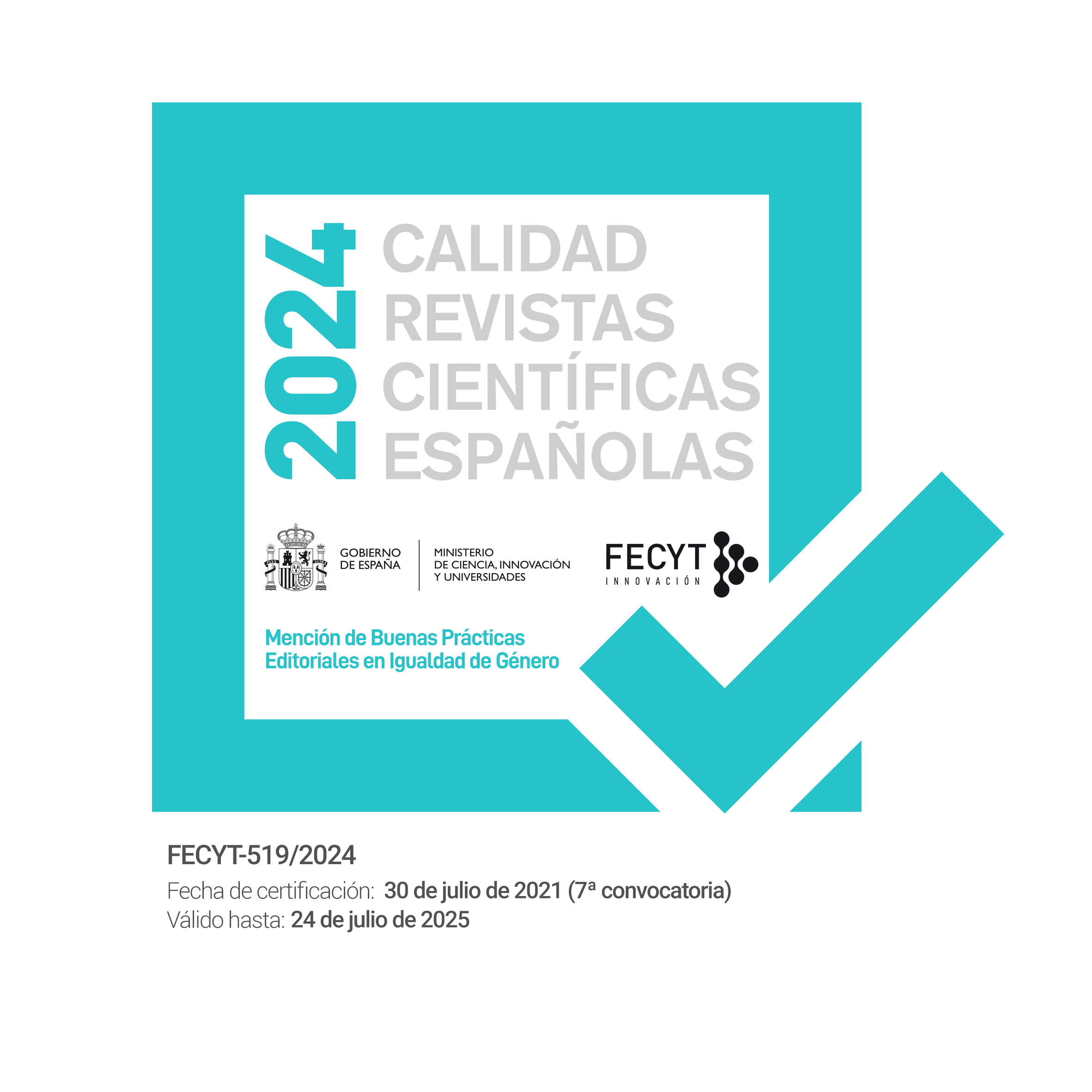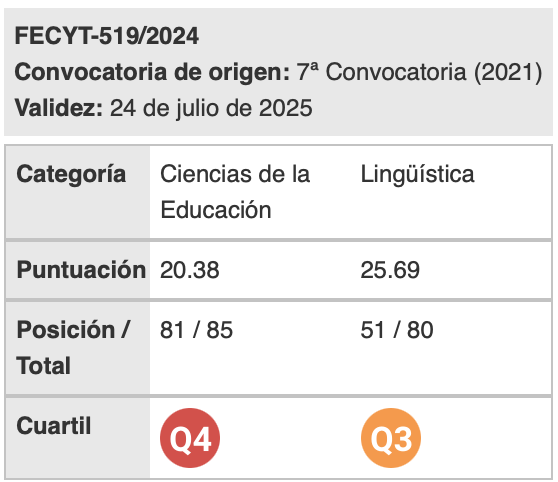Identity, Gender, Uncertainty and Long/Short-term Orientation in British and Spanish TV Adverts at the Beginning of the COVID-19 Pandemic
Keywords:
COVID-19, TV ads, individualism, tribal-collectivism, uncertainty avoidance, masculinity, feminity, long-term orientationAbstract
This article discusses the differences found in some British and Spanish television advertisements issued at the beginning of the COVID-19 pandemic and more specifically during the months of March and April 2020, i.e., during the first weeks of confinement. Forty advertisements issued in Great Britain and Spain were analysed, identifying expressions referring to the cultural dimensions of identity, gender, uncertainty avoidance and long-term orientation. The last dimension is not usually included in intercultural communication analysis, so its inclusion here adds value to this study. This qualitative and quantitative analysis shows that although there are traditionally large differences in advertising in these two countries, due to their also different cultural values, at a time of a global pandemic, values and preferences are very similar, and the same expressions are repeatedly used in the advertisements of both cultural groups. In particular, advertisements aimed at the British audience appealed to feminine and tribal-collectivist cultural values, although adverts for this cultural group typically exhibit traits of masculinity and individualism. Thus, this article demonstrates the importance of context when analysing the speakers' discourse, to the point that a cultural group can highlight cultural values with which it is not traditionally associated. As can be seen in this paper, the similarities found in the communicative styles of these two groups outweigh the differences, when traditionally it should not have been the case.
Downloads
References
Albers-Miller, N. & Gelb, B. (1996). Business advertising as a mirror of cultural dimensions: a study of eleven countries. Journal of Advertising 25(4), 57-70. https://doi.org/10.1080/00913367.1996.10673512
An, D. & Kim, S. (2007). Relating Hofstede's masculinity dimension to gender role portrayals in advertising: A cross‐cultural comparison of web advertisements. International Marketing Review 24(2), 181-207. https://doi.org/10.1108/02651330710741811
Arrindell, W. A., Hatzichristou, Ch., Wensink, J., Rosenberg, E., van Twillert, B., Stedema, J. & Meijer, D. (1997). Dimensions of national culture as predictors of cross-national differences in subjective well-being. Personality and Individual Differences 23, 37-53.
Bhaskaran, S. & Sukumaran, N. (2007). National culture, business culture and management practices: Consequential relationship? Cross Culture Management: An International Journal 14(7), 54-76. https://doi.org/10.1108/13527600710718831
Bennett, J. M. (2004). Developing intercultural sensitivity: An integrative approach to global and domestic diversity. En D. Landis, J. M Bennett & J. Bennett (Eds.), Handbook of intercultural training (pp. 147-175). Thousand Oaks: Sage.
Cienfuegos-Martínez, Y. I., Saldívar-Garduño A., Díaz-Loving, R. & Avalos-Montoya, A. D. (2016). Individualismo y colectivismo: caracterización y diferencias entre dos localidades mexicanas. Acta de Investigación Psicológica 6, 2534-2543. https://www.redalyc.org/articulo.oa?id=358950159008
Correa, F., Contreras, C., Ramírez, A. & López, E. (2002). Dimensiones del individualismo-colectivismo en México: Un estudio exploratorio. La psicología social en México 9, 553-559.
Cheong, Y. K. & Zheng, L. (2010). Advertising appeals as a reflection of culture: a cross-cultural analysis of food advertising appeals in China and the US. Asian Journal of Communication 20, 1-16. https://doi.org/10.1080/01292980903440848
De Mooij, M. & Hofstede, G. (2015) The Hofstede model. Applications to global branding and advertising strategy and research. International Journal of Advertising 29, 85-110. https://doi.org/10.2501/S026504870920104X
Estrada-Villalta, S. & Terpstra-Schwab, N. (2014). La complejidad de la variación transcultural: valores en Guatemala y Estados Unidos. Revista Interamericana de Psicología / Interamerican Journal of Psychology 48(2), 152-165. https://www.redalyc.org/articulo.oa?id=28437146002
Frisby, C. M. (2017). A content analysis of Serena Williams and Angelique Kerber’s racial and sexist microaggressions. Open Journal of Social Sciences 5, 263-281. https://doi.org/10.4236/jss.2017.55019
García-Yeste, M. (2013). Press advertisements for food in Spain: cultural orientations and communicative style. Ibérica 26, 195-215. http://www.redalyc.org/articulo.oa?id=287028373010
Gouveia, V., Milfont, T., Martínez, M. C. & Paterna, C. (2011). Individualism-collectivism as predictors of prejudice toward Gypsies in Spain. Revista Interamericana de Psicología 45(2), 223-234. http://www.redalyc.org/src/inicio/ArtPdfRed.jsp?iCve=28422741013
Hall, E. T. (1963). A system for the notation of proxemic behavior. American Anthropologist 65, 1003-1026.
Hall, E. T. (1976). Beyond culture. New York: Doubleday.
Hall, E. T. (1989). El lenguaje silencioso. Madrid: Alianza.
Hampden-Turner, Ch. & Trompenaars, F. (1998). Riding the waves of culture. New York: McGraw-Hill.
Hampden-Turner, Ch. & Trompenaars, F. (2000). Building cross-cultural competence: how to create wealth from conflicting values. Great Britain: Wiley.
Han, S. P. & Shavitt, S. (1994). Persuasion and culture: advertising appeals in individualistic and collectivistic societies. Journal of Experimental Social Psychology 30, 8-18. https://doi.org/10.1006/jesp.1994.1016
Hofstede, G. (1991). Cultures and organizations: Software of the mind. London: McGraw-Hill.
Hofstede, G. (1998). Masculinity and femininity. The taboo dimension of national cultures. Thousand Oaks: Sage.
Hofstede, G. (2001). Culture’s consequences. Comparing values, behaviors, institutions and organizations across nations. 2nd ed. California: Sage Publications.
Hofstede, G, Hofstede, G. J. & Minkov, M. (2010). Cultures and organizations: Software of the mind. London: McGraw-Hill.
Inkeles, A. & Levinson, D. J. (1954). National character: The study of modal personality and sociocultural systems. Handbook of social psychology 2, 977-1020.
Ivorra-Pérez, F. (2011). La dimensión cultural de género y su influencia en el estilo comunicativo de las páginas web de negocios de empresas jugueteras británicas y españolas. En Multiple voices in academic and professional discourse: current issues in specialised language research, teaching and new technologies (Eds.), S. Maruenda-Bataller & B. Clavel-Arroitia (pp. 91-101). Newcastle: Cambridge Scholars Publishing.
Kitirattarkarn, G. P., Araujo, T. & Neijens P. (2019). Challenging traditional culture? How personal and national collectivism-individualism moderates the effects of content characteristics and social relationships on consumer engagement with brand-related user-generated content. Journal of Advertising 48(2), 197-214. https://doi.org/10.1080/00913367.2019.1590884
Kooyers, J. (2015). The United States and Spain: a comparison of cultural values and behaviors and their implications for the multi-cultural workplace. Honors Projects 399, Grand Valley State University. http://scholarworks.gvsu.edu/honorsprojects/399
Lamprianou, I. (2020). Μeasuring and visualizing coders’ reliability: New approaches and guidelines from experimental data. Sociological Methods & Research. https://doi.org/10.1177/0049124120926198
Leaptrott, N. (1996). Rules of the game: global business protocol. Cincinnati, Ohio: Thomson Executive Press.
Lewis, R. D. (2010). When cultures collide: leading across cultures. Boston: Nicholas Brealey.
Lucker, W. G. (2002). La cultura y la psicología social. En Psicología social de las Américas (Eds.), C. Kimble, E. Hirt, R. Díaz-Loving, H. Hosh, W. G. Lucker & M. Zárate (pp. 507.531). México: Prentice Hall.
Martín-Santana, J. D. & Beerli-Palacio A. (2008). Why attitudes toward advertising are not universal: cultural explanations. Journal of Euromarketing 17(3-4), 159-181. https://doi.org/10.1080/10496480802511299
Mensa, M. & Bittner, V. (2020). Portraits of women: Mexican and Chilean stereotypes in digital advertising. Communication & Society 33(1), 63-78. https://doi.org/10.15581/003.33.1.63-78
Okazaki, S. & Mueller, B. (2007). Cross-cultural advertising research: where we have been and where we need to go. International Marketing Review 24(5), 499–518. https://psycnet.apa.org/doi/10.1108/02651330710827960
Santos, R. (2013). Levantarse y luchar. Barcelona: Conecta.
Schiffrin, D. (1987). Discourse markers. New York: Cambridge University Press.
Schiffrin, D. (1991). El análisis de la conversación. En Panorama de la lingüística moderna de la Universidad de Cambridge. El lenguaje: contexto sociocultural, IV (Eds.), L. Eguren, F. J. Newmeyer & M. L. Martin-Rojo (pp. 299-323). Madrid: Visor.
Sifianou, M. & Garcés-Conejos, P. (2018). Introduction: Im/politeness and globalisation. Journal of Pragmatics 134, 113-119. https://doi.org/10.1016/j.pragma.2018.06.014
Triandis, H. C., Bontempo, R., Villareal, M. J., Asai M. & Lucca, N. (1988). Individualism and collectivism: Crosscultural perspectives on self-in-group. Journal of Personality and Social Psychology 54, 323-338. https://pdfs.semanticscholar.org/409e/07e7c90174c9e9c110e5a39d5c883a6fedcf.pdf
Triandis, H. C. & Suh, E. M. (2002). Cultural influences on personality. Annual Review of Psychology 53(1), 133-160. https://doi.org/10.1146/annurev.psych.53.100901.135200
Van den Hoonaard, W. (2008). Inter and intracoder reliability. En The Sage Encyclopedia of qualitative research methods (Ed.), L. Given (pp. 446-47). Sage Publications. https://doi.org/10.4135/9781412963909.n223
Vélez, R., Ramos, E., Hernández, V., Carmena, E. & Navarro, J. (2004). Métodos estadísticos en ciencias sociales. Madrid: Ediciones Académicas S.A.
Zandpour, F., Campos, V., Catalano, J., Chang C., Dae Cho Y. & Jiang, S. (1994). Global reach and local touch: achieving cultural fitness in TV advertising. Journal of Advertising Research 34(5), 35-63.
Zhang, Y. & Gelb, B. D. (2013). Matching Advertising Appeals to Culture: The Influence of Products' Use Conditions. Journal of Advertising 25, 29-46. https://doi.org/10.1080/00913367.1996.10673505
Downloads
Published
How to Cite
Issue
Section
License
Authors who publish with this journal agree to the following terms:
- Authors retain copyright and grant the journal right of first publication with the work simultaneously licensed under a Creative Commons Attribution License that allows others to share the work with an acknowledgement of the work's authorship and initial publication in this journal.
- Authors are able to enter into separate, additional contractual arrangements for the non-exclusive distribution of the journal's published version of the work (e.g., post it to an institutional repository or publish it in a book), with an acknowledgement of its initial publication in this journal.
- Authors are permitted and encouraged to post their work online (e.g., in institutional repositories or on their website) prior to and during the submission process, as it can lead to productive exchanges, as well as earlier and greater citation of published work (See The Effect of Open Access).

Revista de Lenguas para fines específicos is licensed under a Creative Commons Reconocimiento-NoComercial-SinObraDerivada 4.0 Internacional License.

























